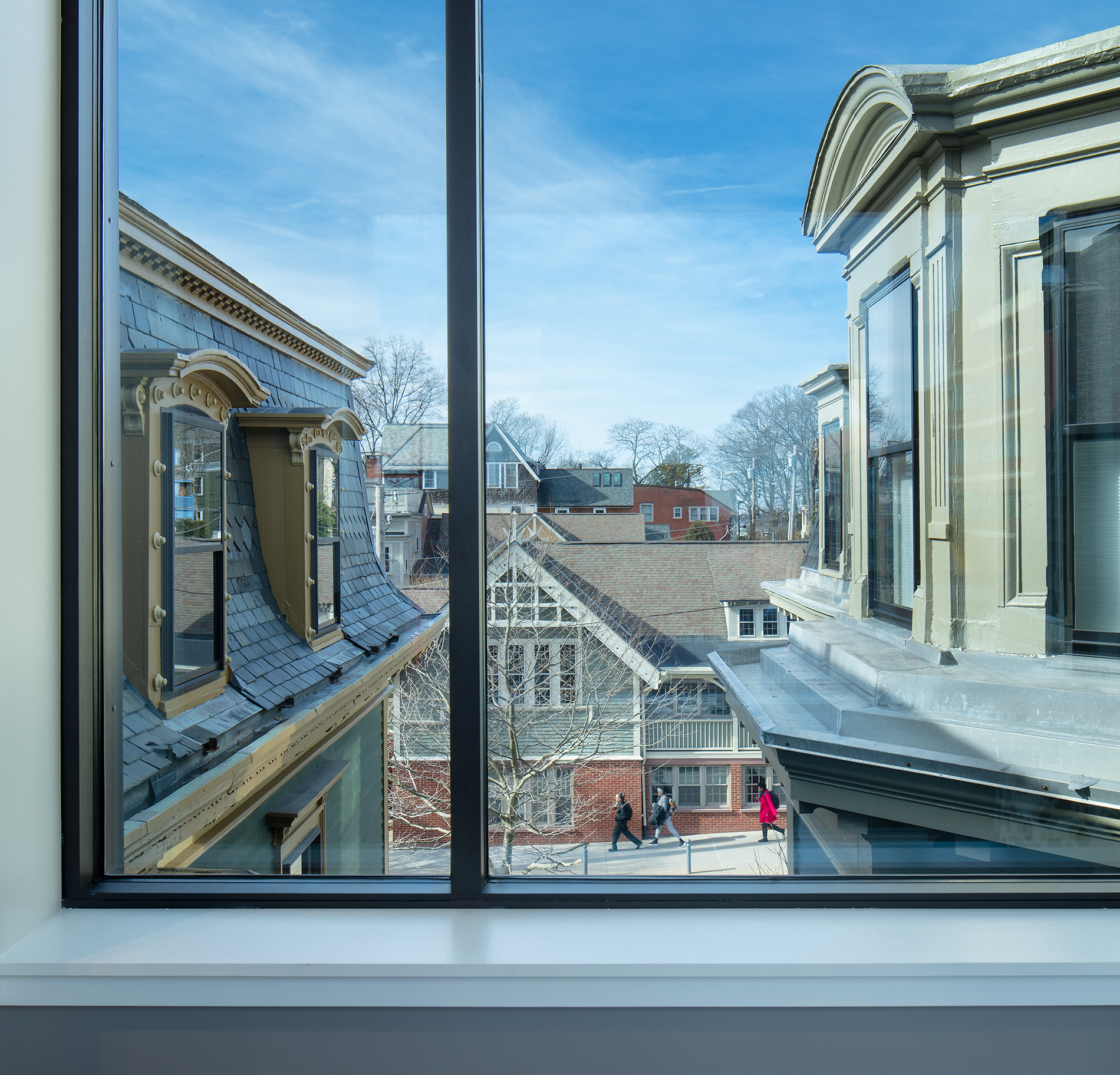
Staying Sharpe: Social Equity through Accessibility in an Adaptive Re-Use Project
When people with mobility issues are confronted with a building that is inaccessible, it is a giant sign saying that they are not welcome. It diminishes the value of their presence and is fundamentally wrong.
Historic buildings often don’t accommodate people with disabilities, but clearly accessibility is an important social equity issue – how do we reconcile preservation goals with an inclusive approach? This was the central challenge when relocating and renovating the 150-year-old, four story Sharpe House at Brown University to create a new central home for the History Department.
Although these two goals may seem at odds, we at KITE Architects understood that preservation and universal design shared a common core value – respect: respect for all the students, faculty, and community members, as well as respect for the buildings’ significant historic features. As the driving force behind all decision making, respect meant saving key features of the building’s original historic character as we reimagined its future for all users.
The resulting move, additions, and connection to the neighboring building required extraordinary commitment and technical problem solving by the entire team…but it was worth it!
In this presentation, Christine West, AIA, discusses how the KITE team responded to this unique challenge with an out of the box design strategy that literally bridged history with inclusivity.